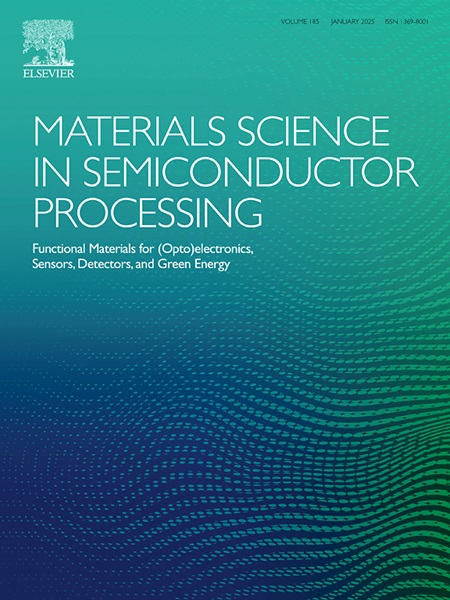用选择性掺杂策略揭示了碘化铜作为钙钛矿太阳能电池空穴传输层的前景
IF 4.2
3区 工程技术
Q2 ENGINEERING, ELECTRICAL & ELECTRONIC
引用次数: 0
摘要
钙钛矿太阳能电池(PSCs)这一新兴领域继续吸引着人们的研究兴趣,特别是碘化铜(CuI)作为高性能空穴传输层(HTL)的潜力。这篇综述全面考察了固态CuI作为HTL在PSC应用中的内在优势,因为它具有优异的p型电导率、环境稳定性和易于合成。此外,本文还探讨了减少缺陷以保持器件功率转换效率(PCE)和稳定性的前沿策略,包括优化合成、通过化学计量控制进行缺陷工程、界面工程和掺杂工程。值得注意的是,在CuI上掺杂镧(La)的工程表现出了显著的潜力,由于其离子大小,提供了增强的结构相容性,改善了能带排列,并大大减少了有助于载流子重组的深层陷阱。这种突破性的掺杂策略产生了la掺杂的CuI HTL,解决了钙钛矿/HTL界面的挑战,从而提高了psc的PCE。随着PSC技术向商业可行性发展,CuI成为加速寻求高效稳定的太阳能解决方案的关键。本文章由计算机程序翻译,如有差异,请以英文原文为准。
Unveiling the prospect of copper iodide as hole transporting layer in perovskite solar cell by selective dopant strategy: A review
The burgeoning field of perovskite solar cells (PSCs) continues to attract research interest, particularly with the potential of copper iodide (CuI) as a high-performing hole transport layer (HTL). This review comprehensively examines the intrinsic advantages of solid-state CuI as HTL for PSC applications due to its exceptional p-type conductivity, ambient stability, and ease of synthesis. Moreover, the review explores cutting-edge strategies for mitigating defects to preserve the power conversion efficiency (PCE) and stability of the device including optimization of synthesis, defect engineering through stoichiometry control, interface engineering and doping engineering. Notably, lanthanum (La) doping engineering on CuI demonstrates remarkable potential, offering enhanced structural compatibility due to its ionic size, improved band alignment, and a substantial reduction in deep-level traps contributing to carrier recombination. This groundbreaking doping strategy produces La-doped CuI HTL that addresses the challenges at the perovskite/HTL interface, leading to an elevation in the PCE of the PSCs. As PSC technology advances toward commercial viability, CuI emerges as a linchpin in accelerating progress in the quest for highly efficient and stable solar energy solutions.
求助全文
通过发布文献求助,成功后即可免费获取论文全文。
去求助
来源期刊

Materials Science in Semiconductor Processing
工程技术-材料科学:综合
CiteScore
8.00
自引率
4.90%
发文量
780
审稿时长
42 days
期刊介绍:
Materials Science in Semiconductor Processing provides a unique forum for the discussion of novel processing, applications and theoretical studies of functional materials and devices for (opto)electronics, sensors, detectors, biotechnology and green energy.
Each issue will aim to provide a snapshot of current insights, new achievements, breakthroughs and future trends in such diverse fields as microelectronics, energy conversion and storage, communications, biotechnology, (photo)catalysis, nano- and thin-film technology, hybrid and composite materials, chemical processing, vapor-phase deposition, device fabrication, and modelling, which are the backbone of advanced semiconductor processing and applications.
Coverage will include: advanced lithography for submicron devices; etching and related topics; ion implantation; damage evolution and related issues; plasma and thermal CVD; rapid thermal processing; advanced metallization and interconnect schemes; thin dielectric layers, oxidation; sol-gel processing; chemical bath and (electro)chemical deposition; compound semiconductor processing; new non-oxide materials and their applications; (macro)molecular and hybrid materials; molecular dynamics, ab-initio methods, Monte Carlo, etc.; new materials and processes for discrete and integrated circuits; magnetic materials and spintronics; heterostructures and quantum devices; engineering of the electrical and optical properties of semiconductors; crystal growth mechanisms; reliability, defect density, intrinsic impurities and defects.
 求助内容:
求助内容: 应助结果提醒方式:
应助结果提醒方式:


